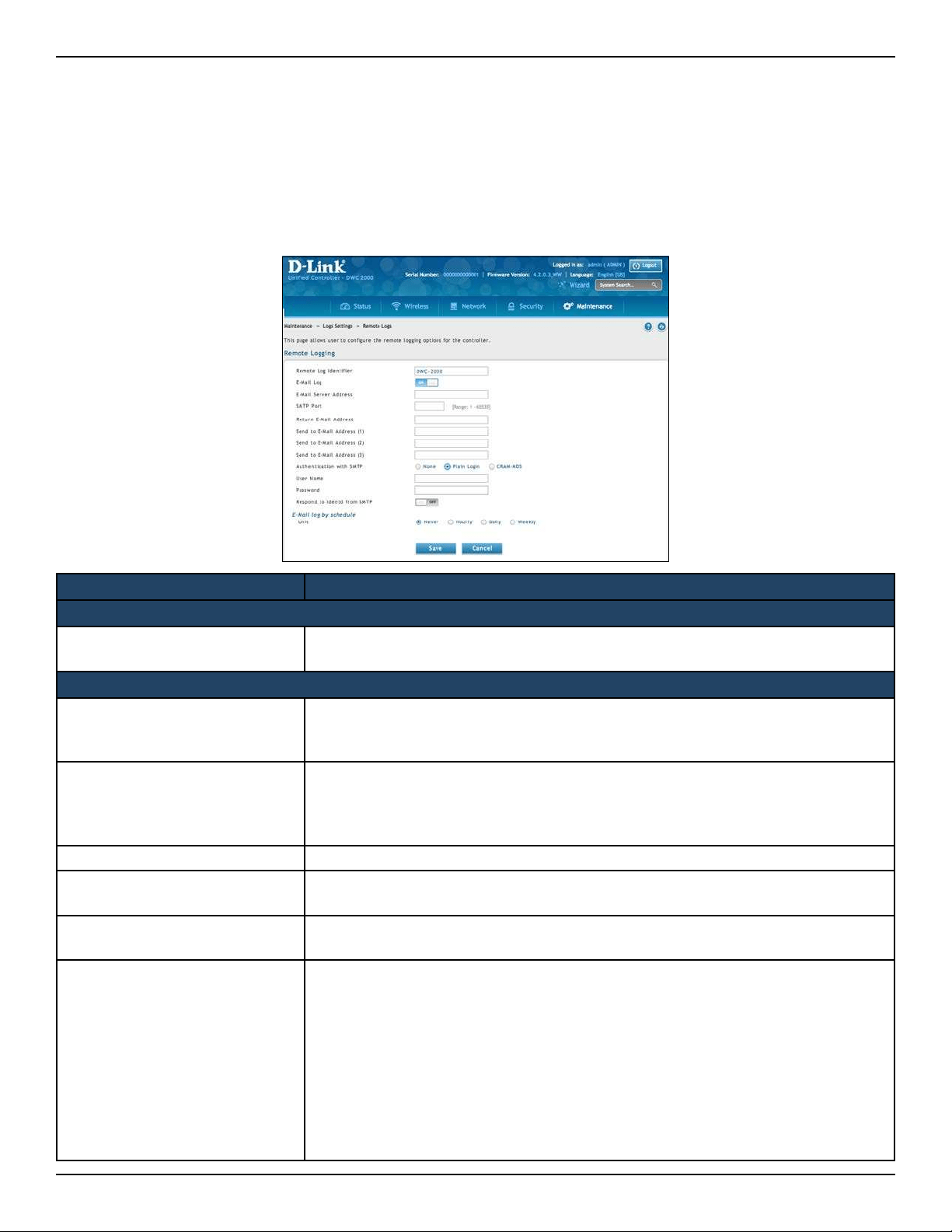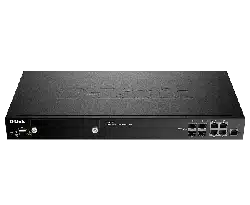Loading ...
Loading ...
Loading ...

D-Link DWC-2000 User Manual 269
Section 10 - Troubleshooting
Remote Logging
Path: Maintenance > Logs Settings > Remote Logs
The wireless controller can be congured to send logs to an email address. Email logs can be sent out based on
a dened schedule by rst choosing the frequency: hourly, daily, or weekly. The wireless controller lets you send
conguration logs to three email recipients.
Option Description
Log Options
Remote Log Identier
Enter a prex used to identify the source of the message. This identier is prexed to
both e-mail and Syslog messages.
Routing Logs
Enable E-Mail Logs
Enables or disables email logs. Choices are:
• ON = enable email logs. Complete the remaining elds on this page.
• OFF = disable email logs. The remaining elds on this page are unavailable.
E-Mail Server Address
If Enable E-Mail Logs is enabled, enter the IP address or Internet Name of a Simple
Mail Transfer Protocol (SMTP) server. The wireless controller will connect to this
server to send e-mail logs when required. The SMTP server must be operational for
email notications to be received.
SMTP Port If Enable E-Mail Logs is enabled, enter the SMTP port of the e-mail server.
Return E-Mail Address
If Enable E-Mail Logs is enabled, enter the e-mail address where replies from the
SMTP server are to be sent (required for failure messages).
Send to E-mail Address(1-3)
If Enable E-Mail Logs is enabled, enter up to three email addresses where logs and
alerts are to be sent.
Authentication with SMTP
Server
If Enable E-Mail Logs is enabled, select an authentication if the SMTP server requires
authentication before accepting connections. Choices are:
• None = no authentication is used. The User Name and Password elds are not
available.
• Login Plain = authentication used to log in using Base64-encoded passwords
over non-encrypted communication session. Base64-encoded passwords oer
no cryptographic protection, making them vulnerable.
• CRAM-MD5 = a challenge-response authentication mechanism dened in RFC
2195 based on the HMAC-MD5 MAC algorithm. CRAM-MD5 oers a higher level
of authentication than Login Plain.
Loading ...
Loading ...
Loading ...
